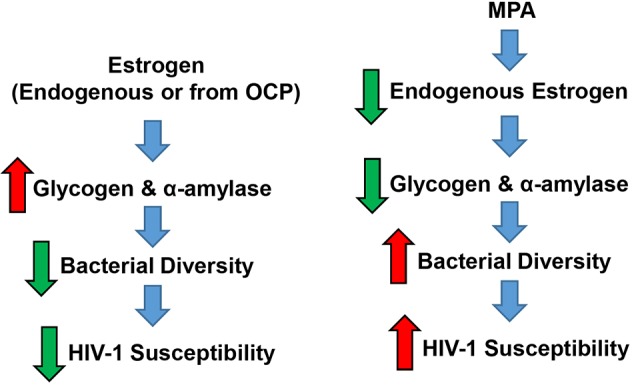Fig. 6.

Proposed mechanism linking DMPA to changes in vaginal microenvironment and HIV-1 susceptibility in Kenyan sex workers. Taken together, our results suggest that estrogen (either from endogenous sources or oral contraceptive pills) is associated with greater quantities of vaginal glycogen and α-amylase, and minimal bacterial diversity within the vaginal microbiota of sex workers. This stable, uniform microbiota is not associated with susceptibility to HIV-1, albeit via incompletely understood mechanisms. In contrast, the hypo-estrogenism resulting from use of MPA lowers key metabolic products (i.e. glycogen, and α-amylase) that can be used by certain protective bacterial species, and the change in substrates allows other bacteria to colonize the vaginal microbiota, in effect increasing bacterial diversity. Diversity of the vaginal microbiota may contribute to enhanced susceptibility to HIV-1 in sex workers by an unknown mechanism that is independent of inflammatory cytokines and/or enhanced T cells.
